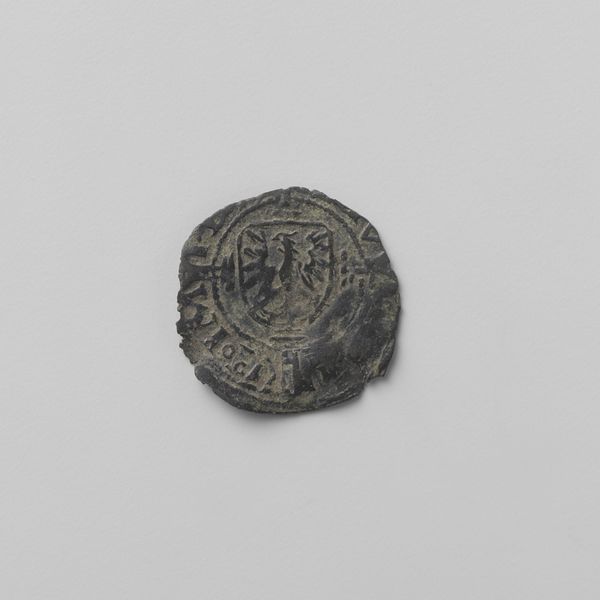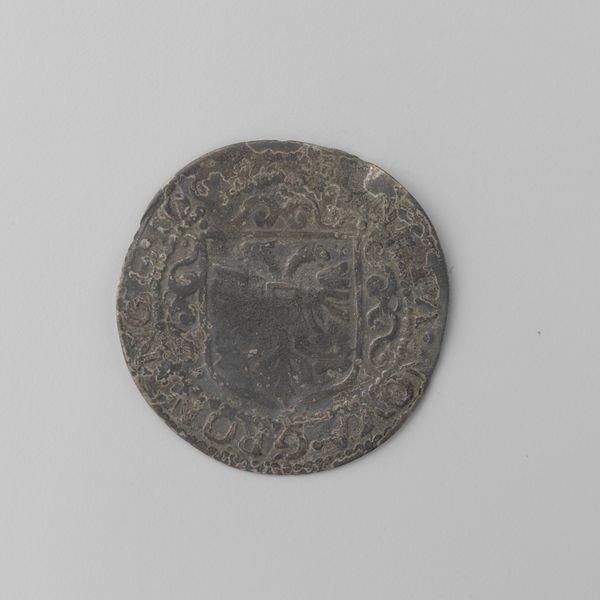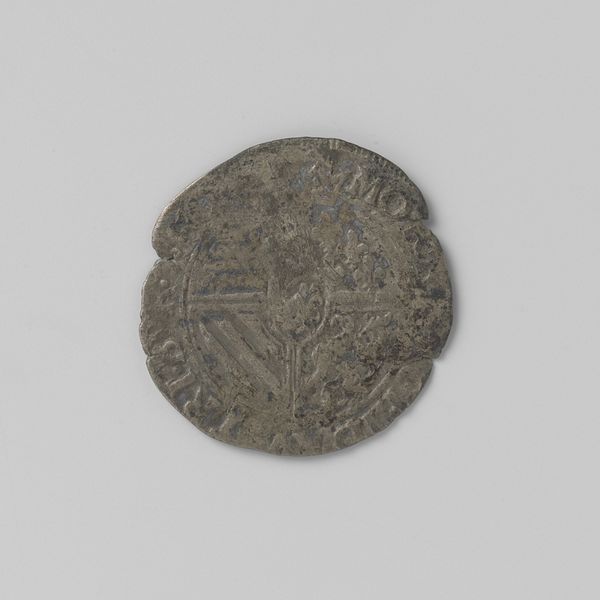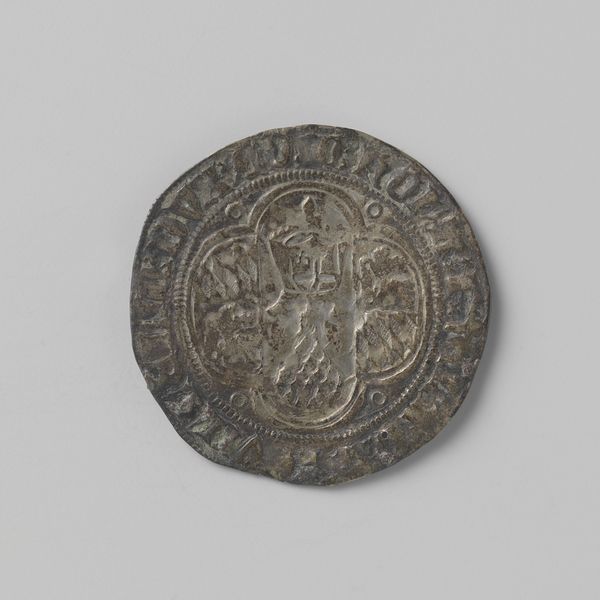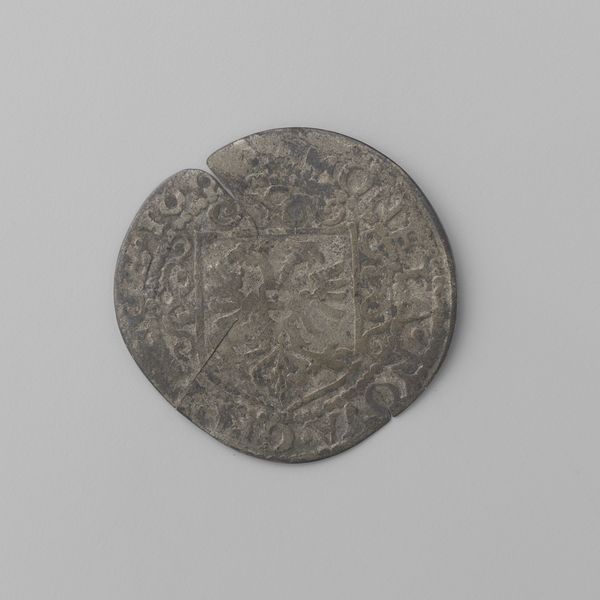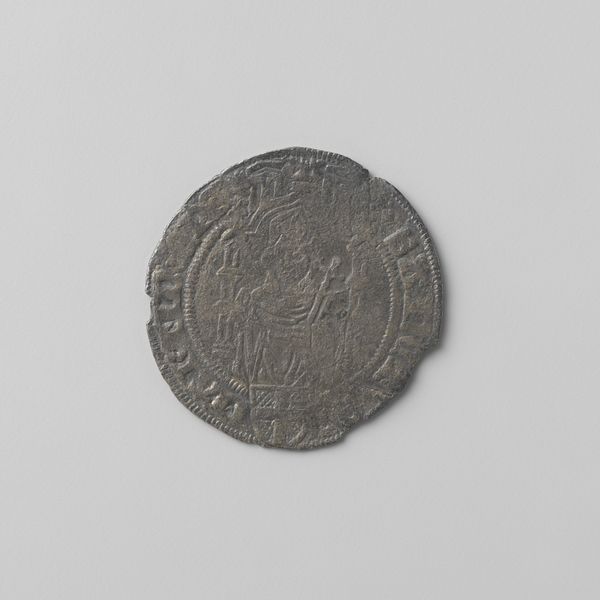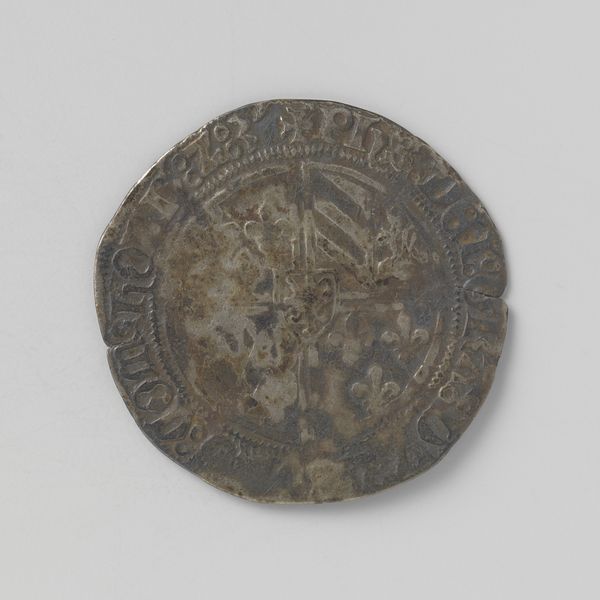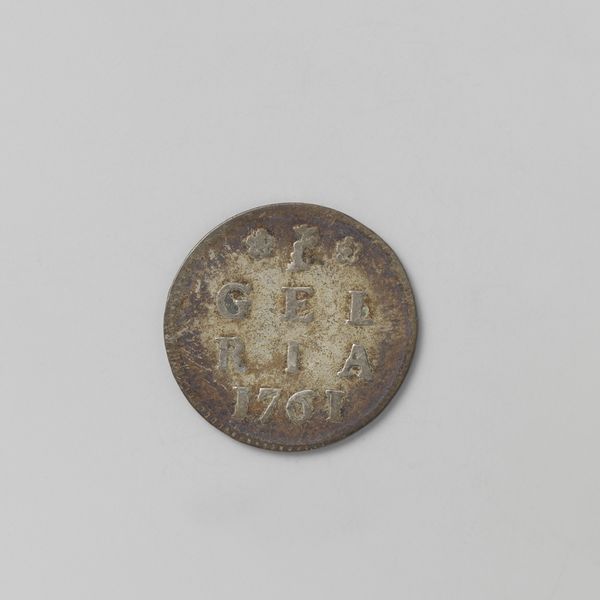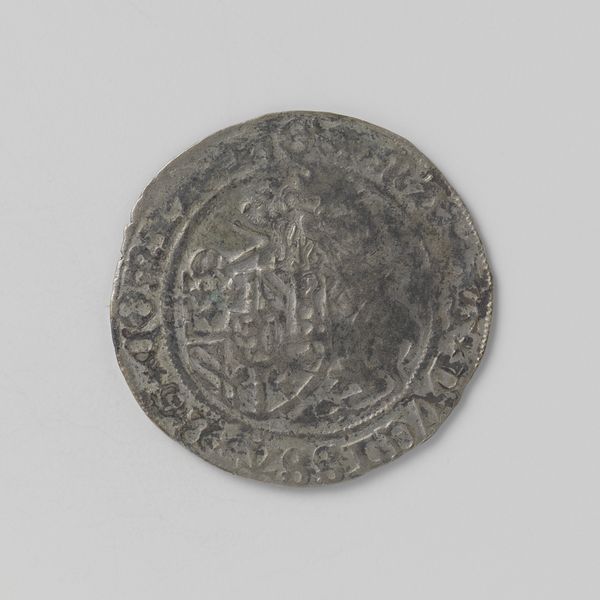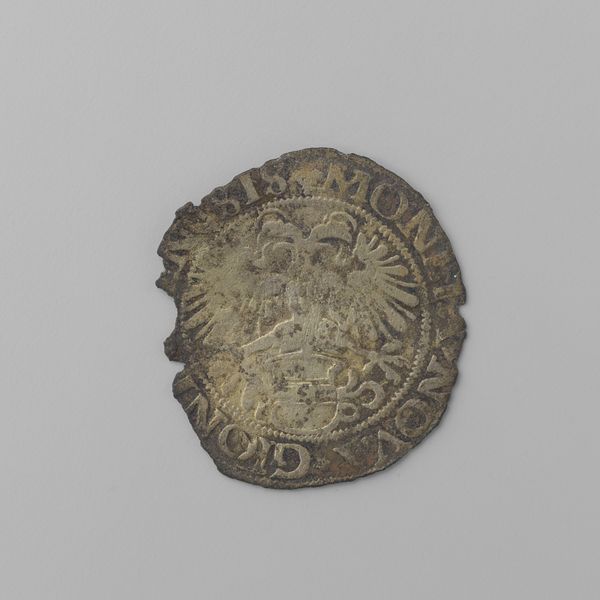
metal, relief
#
medieval
#
metal
#
relief
#
history-painting
Dimensions: diameter 2.7 cm, weight 1.46 gr
Copyright: Rijks Museum: Open Domain
Curator: Let’s turn our attention to this lead matrix from Utrecht, crafted between 1393 and 1423, during Frederik van Blankenheim's reign. It served as a seal. Editor: The sheer endurance of metal always gets to me. The gray of this piece seems to absorb light, reflecting the somberness, I would imagine, of life back then. There is so much implicit authority in its visual form, and yet its distressed condition suggests lost power, or power questioned. Curator: A seal, especially one of this age, becomes a potent symbol of identity and validation. What visual cues do you perceive? How is authority visually encoded in this small object? Editor: Clearly, it's designed to impress. The gothic lettering circles around what appears to be an elaborate crest. Seals are like material echoes of the individual they are assigned to. As for its symbolism, I suppose those crest elements spoke to Van Blankenheim’s identity or claimed connection to a lineage and its power dynamics, and also to a place, anchoring it to geographical reality. What do we know about that encoding? Curator: These emblems of medieval history offered not only visual assurances but also implied deeper societal roots, hinting at a narrative meant to reinforce social hierarchies. When we study them closely, we learn that this encoding also played an active part in contemporary spiritual beliefs and, simultaneously, personal and social status. In this case, this emblem of the bishopric merges faith, family lineage, and personal status. Editor: How often did commoners come into contact with objects such as these? I’m thinking about the average person of that time being confronted with symbols of this caliber and what that signified on a day-to-day level. To what extent did the semiotics shape people's very world view? Curator: Encounters for those outside elite circles would be rare, I assume. But it does open the question of cultural trickle-down and the effects on a broader populace. Think of illuminated manuscripts—carefully guarded and infrequently seen, they shaped minds and behaviors. Editor: It feels so far removed, yet these symbols persist in our collective memory and continue shaping our cultural expectations in subtle ways. Curator: Indeed. A piece like this encourages me to trace that continuity, those invisible yet powerful through lines in our human experience. Editor: Agreed, a small metallic circle reflecting very big power narratives.
Comments
No comments
Be the first to comment and join the conversation on the ultimate creative platform.
